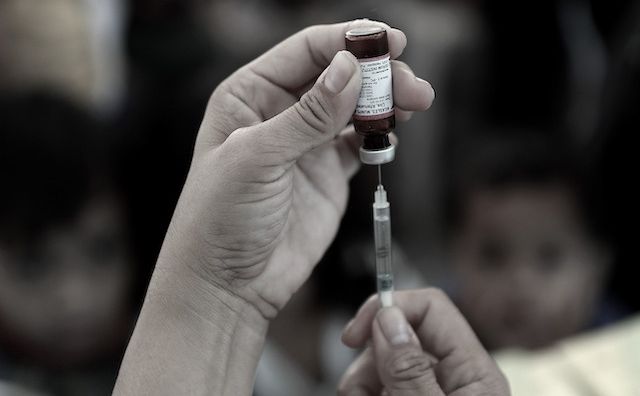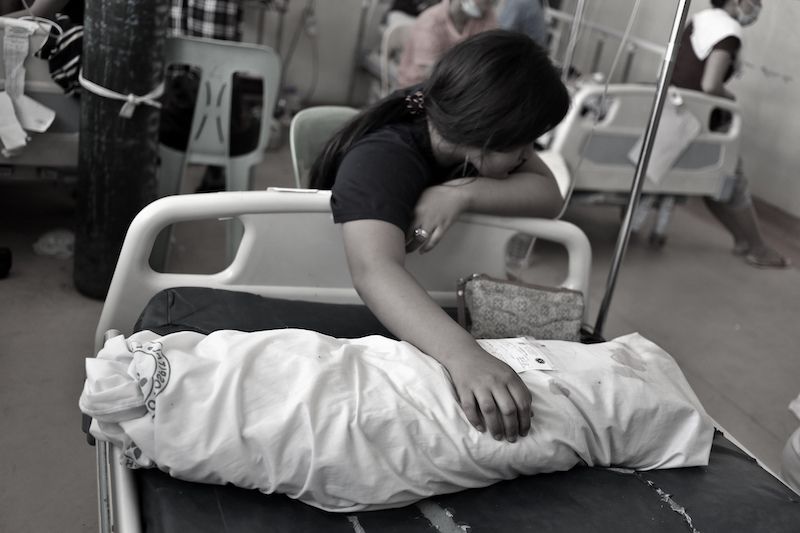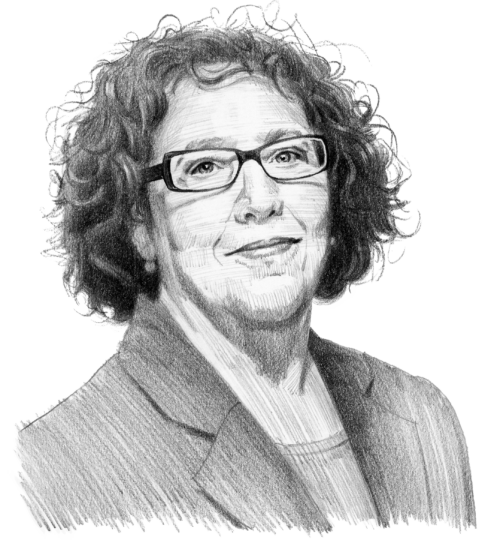Vaccinations and the loss of collective awareness
Two decades ago, it appeared that measles had been nearly eradicated. But keeping it at bay depends on high rates of immunization. As these rates decline, measles outbreaks have spiked again, spurred by the “vaccine hesitancy.”

In a nutshell
- The WHO reports a 30 percent annual increase in measles cases globally in 2018
- Only a fraction of the general population goes unvaccinated, but even these levels exceed the safety threshold in a growing number of communities
- The cost of containing outbreaks of contagious diseases is steep
- Public health officials are sounding the alarm, but as memory of deadly epidemics fades, public complacency grows
This month marks the 19th anniversary of measles eradication in the United States. The March 17, 2000 declaration was celebrated as a major step toward conquering a disease that once took nearly three million lives worldwide each year. But experts also warned at the time that the milestone was “inherently unstable” and dependent on maintaining very high rates of immunization.
That instability is now apparent as measles outbreaks spike around the world, prompting concern that the fight to eradicate the disease is stalled and frustrating public health officials who thought victory was in sight. As costs of the disease escalate – including thousands of deaths – governments around the globe are grappling with “vaccine hesitancy,” which is widely regarded as the primary cause of the crisis.
Measles comeback
So far this year, 228 cases have been confirmed across 12 U.S. states, already 61 percent of last year’s total with nine months still to go. The World Health Organization (WHO) reports a 30 percent increase in measles cases globally, while noting that “some countries that were close to eliminating the disease have seen a resurgence.”
A total of 98 countries reported more cases of measles in 2018 than in 2017, contributing to a global upsurge that UNICEF characterizes as “alarmingly high levels.” The hardest-hit countries include Ukraine (30,338 cases), the Philippines (13,192) and Brazil (10,262). Experts also warn that the actual number of cases is much higher, because many are either undiagnosed or unreported.
A variety of factors have contributed to this resurgence, but the primary cause is what public health officials call “vaccine hesitancy” – defined by the WHO as “the reluctance or refusal to vaccinate despite the availability of vaccines.” Indeed, the organization currently ranks vaccine hesitancy among the 10 threats to global health.
Vaccination levels can vary dramatically among states and local school districts.
The majority of U.S. outbreaks have been linked to travelers infected while abroad, but rising rates of vaccine refusal feed the contagion on American soil. The percentage of unvaccinated young children increased from 0.3 percent in 2001 to 1.3 percent for children born in 2015, according to the U.S. Centers for Disease Control (CDC).
That is a tiny proportion of the population, of course, but the figure alone does not reflect the epidemiological threat. All 50 states of the U.S. require vaccination for students attending public schools, but 46 states provide exemption based on religious beliefs and 17 of those also allow exemption for philosophical reasons. Therefore, vaccination levels can vary dramatically among states and local school districts.
Holes in the system
Personal exemptions in California, for example, increased 380 percent between 1996 and 2010.In Washington, non-vaccination rates in some counties exceed 27 percent. Washington State Governor Jay Inslee declared a state of emergency earlier this year after measles outbreaks in areas such as Clark County, north of Portland, which have high exemption rates. Researchers have also identified clusters of significant exemptions in California, Oregon and Michigan.
Children with nonmedical exemptions are 35 times more susceptible to measles. A steady accumulation of unvaccinated individuals erodes the “herd immunity threshold,” that is, the proportion of people who must be vaccinated to prevent outbreaks. The minimum threshold, scientists say, is a vaccination rate of 90 percent.
During a congressional hearing earlier this month, Emory University Professor Saad B. Omer told lawmakers, “While recent measles outbreaks have been contained, the frequency and size of these outbreaks is alarming.”

The price tag
The public cost of measles is a function of the level of exposure and duration of an outbreak. In any case, it requires vigorous responses by state and local health departments. As documented by researchers in the March 7 online edition of the Journal of the American Medical Association, the cost of responding to a single case of measles can be as high as $142,000. The figure depends on the number and location of contacts that must be traced by public health officials, the level of postexposure preventive measures that must be administered, and the degree of quarantine required. And those are just direct costs.
Nor is the actual measles infection the only health threat. The virus also suppresses the immune system, prompting a host of secondary conditions including ear infections, diarrhea, encephalitis and pneumonia, which researchers say are associated with substantial morbidity and mortality.
A record 81 U.S. flights were investigated last year for carrying at least one person contagious with the disease.
Outbreaks require health departments to shift resources away from other priorities. CDC researchers, for example, estimated that 16 outbreaks involving 107 measles cases in 2011 consumed personnel time in the range of 42,635 to 83,133 hours. Beyond health departments, the researchers identified (but did not quantify) outbreak costs to hospitals and clinics, schools and universities, and police departments. A record 81 U.S. flights were investigated last year for carrying at least one person contagious with the disease, according to media reports.
The financial burden spreads as fast as the disease. Researchers have calculated that the proper schedule of vaccines for a cohort of 4 million children born in 2009 would prevent 20 million illnesses and 42,000 deaths in their lifetime, with a savings of $14 billion in direct costs and $69 billion in indirect costs.
Phony link
Outright refusal to vaccinate is only part of the problem. Some 27 percent of parents delay one or more of their child’s immunizations, and 15 percent of parents selectively refuse one or more of the recommended vaccines, according to the U.S. Department of Health and Human Services. Only 70 percent of American children aged 19 months to 35 months are up-to-date with the complete seven-vaccine series, according to the CDC.
Public health officials cite complacency and inconvenience as contributing to vaccine hesitancy. But so, too, is the baseless yet persistent claim that immunization causes autism. Yale University reports that concerns about vaccine safety are spreading throughout Russia, Japan, France, Italy, Greece, Vietnam and Saudi Arabia.
The vaccine-autism myth originated with the 1998 publication in The Lancet of a paper by (former) British physician Andrew Wakefield and 12 colleagues. Although the research methodology was questionable, the study received worldwide publicity. Ultimately, the British General Medical Council declared the research to be fraudulent, but it took The Lancet 12 years to retract the paper. By then, the damage was done.
The latest proof of that was published in early March 2019 in the Annals of Internal Medicine. The Danish study involved a total of 657,461 children (some vaccinated, others not) who were followed for a decade to test the purported link between vaccination and autism. No evidence of such was found. According to the researchers,
The study strongly supports that MMR vaccination does not increase the risk for autism, does not trigger autism in susceptible children, and is not associated with clustering of autism cases after vaccination. It adds to previous studies through significant additional statistical power and by addressing hypotheses of susceptible subgroups and clustering of cases.
Dozens of other studies have invalidated Wakefield’s deception, and yet it persists. The highest cost has been the lives lost to preventable disease. But there has also been the enormous opportunity cost of shifting limited resources from potentially life-saving research to repeated reevaluations of the phony vaccine-autism link.
Facebook recently announced plans to curtail the distribution of vaccine misinformation.
The media’s role
Some experts blame social media for spreading misinformation far and wide. For example, the Royal Society for Public Health in January 2019 characterized media as “a breeding ground for misleading information and negative messaging around vaccination.” The head of England’s National Health Service likewise blamed online messaging for the traction gained by “vaccination deniers.”
In response, Facebook recently announced plans to curtail the distribution of vaccine misinformation across the platform and to provide more authoritative information instead. The specific actions announced by the company include:
- Reducing the ranking of Groups (platforms for users to communicate on shared interests and exchange opinions) and Pages (official profiles for celebrities, brands or businesses) that spread misinformation about vaccinations in News Feed and Search. These Groups and Pages will not be included in recommendations or in predictions when one types into Search
- Rejecting ads that include misinformation about vaccinations and removing related targeting options such as “vaccine controversies.” Ad accounts that continue to violate company policies may be disabled
- Withholding content or content recommendations that contain misinformation about vaccinations on Instagram Explore or hashtag pages
YouTube, for its part, has reportedly decided that channels promoting anti-vaccine propaganda will be barred from advertising under the company’s policy that prohibits monetization of videos with “dangerous and harmful” content. And according to media reports, Pinterest stopped returning all search results related to vaccinations until it can develop strategies to sift through “polluted” content.
The complacency challenge
The science of inoculation seems downright simple today. As History.com tells it, Edward Jenner, an English country doctor from Gloucestershire, noticed that milkmaids exposed to cowpox (which caused blistering on cow’s udders) did not catch smallpox. On a spring day in 1796, Jenner transferred fluid from a cowpox blister to a scratch on the skin of James Phipps, an eight-year-old boy. Two months later, Jenner exposed the boy to smallpox matter and no disease developed, and doctors all across Europe soon followed suit. The Jenner model was also used to create vaccines against polio, whooping cough, measles, tetanus, yellow fever, typhus, and hepatitis B, and many others.
By comparison, the political and social dynamics of mass vaccination have become maddingly complex. As the number of outbreaks increases, governments are debating stricter enforcement methods to maintain herd immunity. In the United States, Dr. Scott Gottlieb, outgoing commissioner of the Food and Drug Administration, said the ease of exemptions could well force federal authorities to preempt states on vaccine requirements. Italian lawmakers this month began slapping fines on the parents of unvaccinated children. Officials in Victoria, Australia, have made vaccinations a condition for family assistance payments. And last year, France began barring children from school unless they received a full schedule of 11 vaccinations.
The irony is that widespread vaccination and the herd immunity it confers has nurtured a dangerous degree of complacency about the risks of disease outbreaks. As noted by David Callender of the University of Massachusetts,
Due to lack of first, second, or third hand experience with vaccine-preventable diseases, there is now an underestimation of complications associated with vaccine-preventable diseases. This paucity of collective knowledge in itself can tip the scales in favor for vaccine hesitancy when in fact the risks of vaccination do not at all outweigh their benefits.
The deaths of millions would be a tragically high price to pay to overcome that collective complacency.








